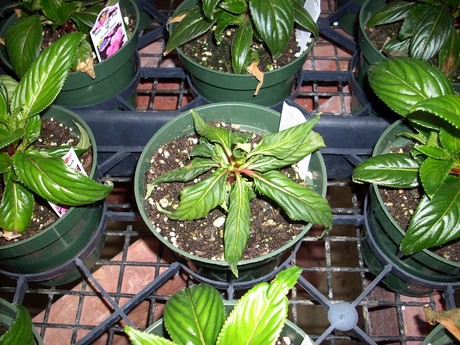As an Extension Educator with Penn State I spend my winters on the speaking circuit addressing growers and farmers on a variety of topics. One of the many talks that I cover deals with irrigation water quality and its impact on both plant growth and pesticide efficacy. Before I start into my presentation, I often ask the audience to raise their hands and indicate if they have had their irrigation water tested in the last year. Typically, about 10% of the audience has had their water tested in the past year with another 5% indicating that they have had their water tested within the past 3 years. While at face value, this may not be alarming, but if you are in the business of growing plants and applying crop protectant chemistries an understanding of your water quality is critical to the success and profitability of your operation.
by Thomas Ford
When I venture out to visit farms or greenhouses, I carry with me a pH meter, a conductivity or EC meter, an alkalinity titrator, and alkalinity test strips. If a grower tells me that they think they have a nutrition problem, I first ask the grower if they have had a recent water test conducted, and if they don’t, I make a beeline to their faucet to evaluate the quality of their water source. I calibrate my meters first and then I check the pH and the EC (Electrical Conductivity) of the clear water. If the water pH is high, I typically surmise that the grower will be employing some form of acid injection to reduce the pH of his irrigation water. If the EC of the clear water is high, I become greatly concerned, because a high EC could indicate that road salt has infiltrated the aquifer or that the well is being contaminated via salts locked in the maritime sediments that surround the ground water. In rare cases, the salts are infiltrating into the well due to natural gas exploration and/or historical gas and/or oil drilling.

Elevated water pH is rather easy to deal with via acid injection, but if the EC is very high the grower/farmer is left with very few alternatives that can be used to mitigate this issue. Reverse osmosis is the most expensive, but it is often size limiting. Reverse osmosis systems are considered cost effective for small specialty propagators, but as the size of the operation increases the costs become extremely prohibitive. If a known water source with a lower EC is available, a grower can either adopt it as their sole water source or blend it with the high EC water to provide irrigation water with acceptable water quality. Frequently small growers will collect rainwater off their barns and roofs into cisterns from which they will draw/blend their water to reduce the EC of their existing water source. Rainwater typically has a very low EC, no alkalinity, and a low pH. The only concern with rainwater as an irrigation water source lies with its use on edible crops due to possible E. coli or Salmonella concerns. Birds frequently roost on the roofs and the excrement that they leave behind will mix with the rainwater and drain into the cistern creating a possible food safety risk.
In some situations, a grower may have no recourse but to drill a new well, utilize a nearby pond or stream, or connect into a public water source. Drilling a new well however, may not be an acceptable solution if you are dealing with significant water quality issues. In my area, a grower was made aware that his well, pond, and spring contained elevated levels of sodium and chloride and that the EC level was over 2.3 m/S. A hydrogeologist was consulted to review the local geology of the area and it was determined that while the grower would be drilling into a limestone aquifer, the likelihood of finding water with similar or worse water quality was significant. The grower then looked at piping water from the creek a quarter mile away, before finally deciding to connect to public water. The use of the public water system was not free of issues, but it provided the surest outcome for a grower intent on raising floriculture crops and greenhouse tomatoes.
Before purchasing a tract of land to initiate a horticultural operation, have all of your water sources evaluated. If the testing reveals that there are water quality concerns, consult with a expert on your treatment options and see if treatment is cost effective. If the water quality problem cannot be cost effectively fixed, consider walking away from the table and look for a new piece of property to locate your operation.
The water test results illustrated below are from a PA grower who ignored the advice to walk away from the table and to avoid purchasing a property. By ignoring this advice he had no recourse but to connect to public water. Here is a snapshot of his irrigation water quality. Everything in bold type is a cause for concern for the owner/grower:

While the above water test is alarming, this grower knew what he was getting into and decided that the merits of the property (location) outweighed the costs of treatment. As we move several weeks into the greenhouse production year ask yourself, “Have checked your irrigation water quality recently?
Source: eGRO Blog
